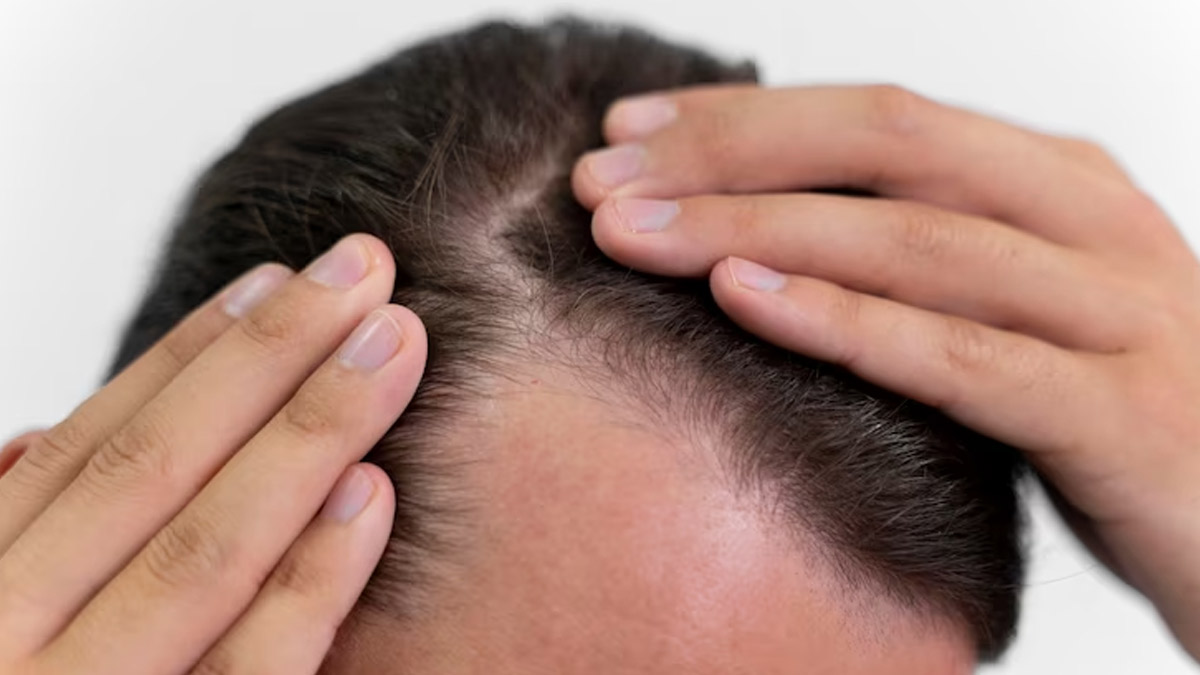
Male pattern baldness is commonly characterised by a receding hairline. It is usually characterised by gradually thinning of hair on the front, temples, and top of the head. The hairline will often start to move back, usually from the temples. Sometimes, the hairline may recede to form an "M" shape.
Table of Content:-
The most common cause of a receding hairline is male pattern baldness, which is a genetic condition caused by a combination of hormones and age. It is more commonly seen in men between 30 and 50 but can also occur in younger men. Other factors contributing to a receding hairline include stress, poor nutrition, and certain medications.
Stages Of Hairline Recession
Early Stage
The early stages of a receding hairline is often marked by a thinning of the hair around the temples and forehead. This is often the first sign of a receding hairline and can be difficult to detect without careful examination. It is important to note that this stage can occur at any age, though it is more common in men over the age of 40.

Moderate Stage
The moderate stage of a receding hairline is characterised by a more obvious recession of the hairline. This is often marked by a distinctive M-shape or widow's peak. At this stage, the hairline may be more noticeable, and the hair around the forehead and temples may be noticeably thinner.

Advanced Stage
The advanced stage of a receding hairline is often marked by a significant recession of the hairline, leaving only a small amount of hair around the temples and forehead. At this stage, the hairline may be so far back that it is difficult to distinguish it from the scalp.
Also read: Female Pattern Baldness: Causes, Symptoms, Types, And Treatment
It is important to note that the stages of a receding hairline can vary greatly depending on the individual. Some individuals may experience a rapid hairline recession in a short time while others may see a slower and more gradual recession. Additionally, some individuals may have a more severe receding hairline than others.
Diagnosis Of Receding Hairline
A dermatologist should be consulted to determine the type of hair loss you are having and the cause. Your doctor will need information about your personal and family medical history.
A "pull test" is one type of test that your doctor may perform. They will pluck on a few hairs lightly to see how many fall out and how easily they fall out.
A sample of scalp tissue or hairs may be useful in determining whether a scalp infection is causing hair loss. A biopsy involves your doctor removing a small piece of tissue from the damaged area of your body. A lab will examine the tissue sample for evidence of infection or disease. A blood test may also be performed to look for problems.
Also read: 5 Popular Methods To Treat Baldness In Men
Treatment Options
Various treatments are available to slow the progression of a receding hairline. A dermatologist may prescribe you certain medications, such as minoxidil or finasteride, as well as lifestyle changes, such as reducing stress, eating a healthy diet, and avoiding excessive alcohol consumption. Surgical procedures, such as hair transplants, may be considered in some cases.
It is important to note that a receding hairline is a natural process and is not necessarily a sign of health problems. However, you must speak to your doctor if you are concerned about hair loss.
Image credit- FreePik
Also watch this video
How we keep this article up to date:
We work with experts and keep a close eye on the latest in health and wellness. Whenever there is a new research or helpful information, we update our articles with accurate and useful advice.
Current Version